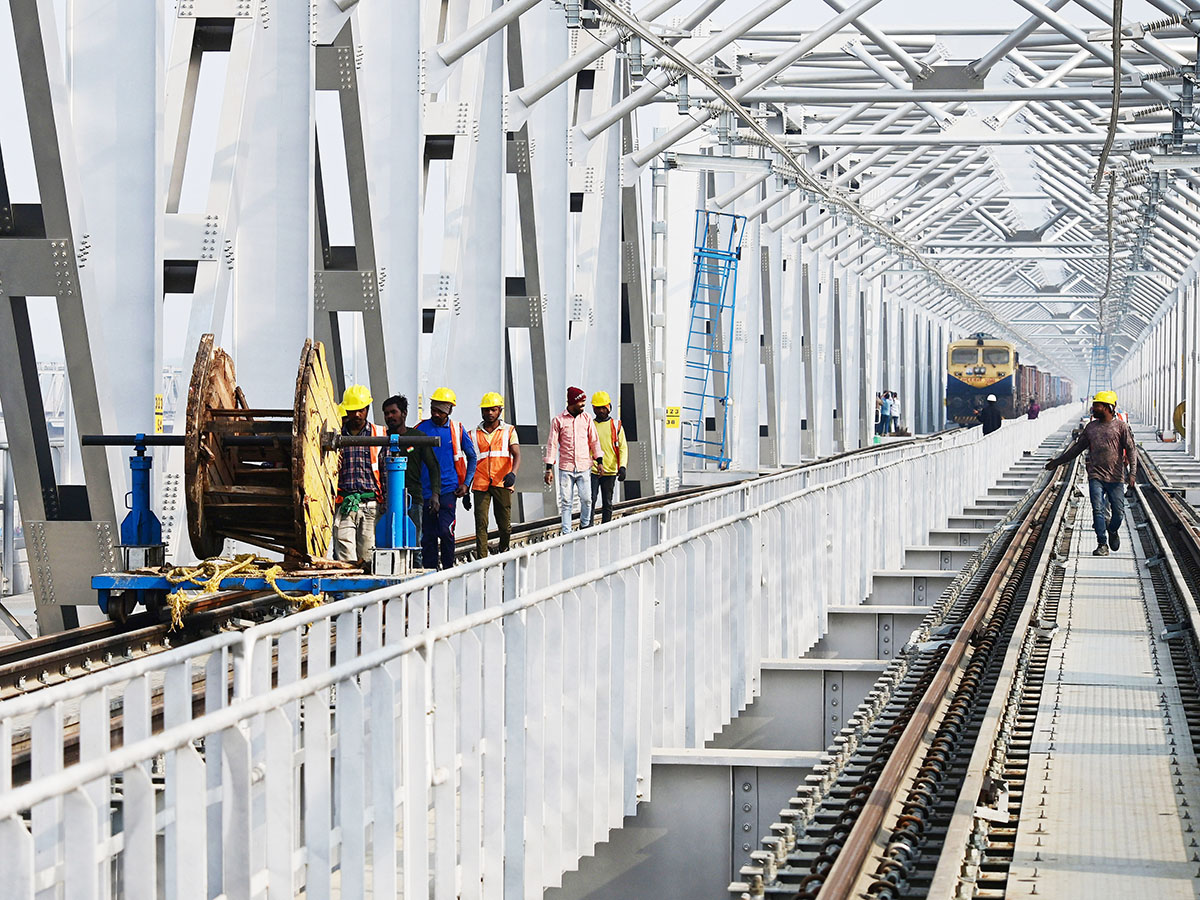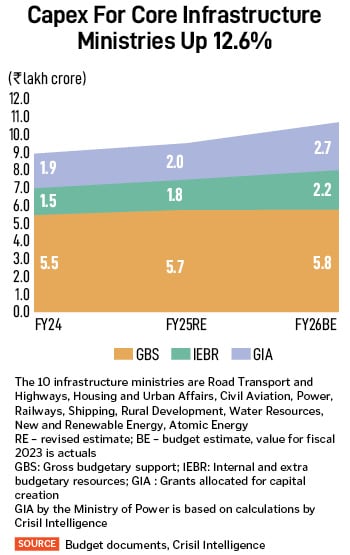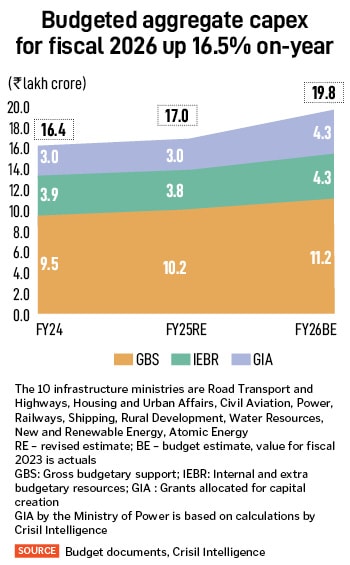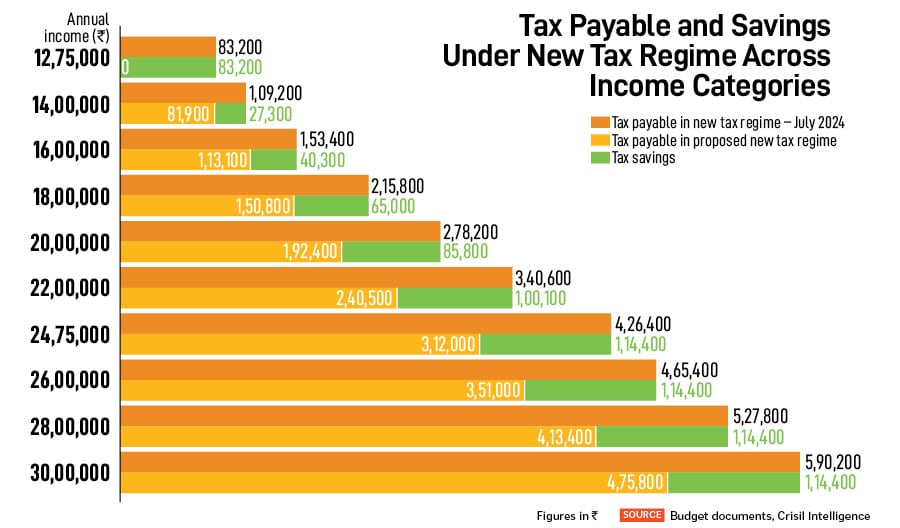
Here is a sector-wise analysis of some of Budget announcements in four key areas: Infrastructure, Agriculture, Manufacturing and Consumption.
Infrastructure
- Post the pandemic, the central government’s capex outlay for infrastructure ministries has risen from Rs6.6 lakh crore in fiscal 2021 to Rs9.6 lakh crore in 2025 (compound annual growth rate of 9.5 percent). This has been spent on rural roads, highways, airports, railways and power to improve physical connectivity, reduce logistics costs and enhance competitiveness. Further, with Rs10.7 lakh crore allocation for fiscal 2026, the stage is now set for improved private sector participation, with a focus on promoting PPP [public private partnership] projects across infrastructure ministries.
- The central government’s support to states through interest-free loans would likely boost state-level infrastructure development.
- The next phase in asset monetisation is expected to support potential reinvestment opportunities and help the government meet its fiscal deficit target.
- Granting of infrastructure status to vessels of a certain size in the shipping industry will give easy access to long tenure, low-cost funding to Indian ship manufacturers, which will help them acquire and operate more ships.
Also read: Will the Union Budget boost the economy?
- The Maritime Development Fund ensures substantial government support to the industry, which will help in increasing domestic production whilst boosting international trade. This will help strengthening India’s position in the global shipbuilding market and help the country become among the top shipbuilders globally as per the Amrit Kaal Vision 2047.
- Urban infrastructure projects in areas pertaining to redevelopment of cities, water and sanitation, and metro rail development will receive financing boost and improve standard of living for citizens in urban localities.
- Development of smaller airports and helipads in hilly, aspirational and northeast regions would enable better air connectivity in the remote locations. This would enable efficient movement of passengers and cargo in these locations.
Agriculture
- The outlay for the Ministry of Agriculture and Farmers’ Welfare dipped ~3 percent for fiscal 2026BE (budgeted estimates), compared with fiscal 2025RE (revised estimates). Allocation under schemes supporting sustainability, holistic agriculture development, climate resilience and post-harvest management witnessed growth, ranging from 8 percent under the Pradhan Mantri Annadata Aay Sanrakshan Abhiyan (PM-AASHA) to 42 percent in case of Rashtriya Krishi Vikas Yojana (RKVY). However, allocation under the Pradhan Mantri Fasal Bima Yojana plunged 23 percent.

- The Ministry of Agriculture and Farmers’ Welfare also introduced several schemes aimed towards comprehensive planning for fruits, vegetables and cotton, cultivation of makhana, high-yielding seed varieties and reducing import dependence for pulses, with a combined corpus of ~Rs2,200 crore.
- The Ministry of Fisheries, Animal Husbandry and Dairying saw a 37 percent jump in allocation for fiscal 2026BE, compared with fiscal 2025RE. The Department of Fisheries received a substantial fillip (62 percent over fiscal 2025RE) following the announcement of the Fisheries and Aquaculture Infrastructure Development Fund introduced to aid the development of infrastructure in marine and inland fisheries. The outlay for Pradhan Mantri Matsya Sampada Yojana grew to Rs2,465 crore for fiscal 2026 from Rs1,500 crore for fiscal 2025RE.
Also read: Budget 2025: Government’s big push for agri growth
- The basic customs duty (BCD) on frozen fish paste (surimi) reduced to 5 percent from 30 percent, which is used for the manufacture of surimi analogue products for exports. Further, BCD on fish hydrolysate was reduced to 5 percent from 15 percent, which is used for the manufacture of aquatic feed
- Under Ministry of Chemicals and Fertilisers, the outlay for the Department of Fertilisers dipped 14 percent. Subsidy allocation for urea remains unchanged over fiscal 2025RE, while that for non-urea declined 6 percent in fiscal 2026BE.
- Allocation for the Department of Rural Development grew ~8 percent for fiscal 2026BE. That for short-term employment programme under the Mahatma Gandhi National Rural Employment Guarantee Act, 2005, accounting for ~46 percent share in total allocation, remained at par with fiscal 2025RE. Meanwhile, allocation for the scheme focusing on long-term development such as rural houses (Pradhan Mantri Awas Yojana or PMAY) witnessed a significant jump of ~69 percent over fiscal 2025RE.
- The Ministry of Food Processing saw a 56 percent jump in allocation for fiscal 2026. Outlays for the Pradhan Mantri Kisan Sampada Yojana (PMKSY) and Pradhan Mantri Formalisation of Micro Food processing Enterprises Scheme (PM FME) jumped 43 percent and 67 percent, respectively. The production-linked incentive scheme got a 71 percent boost to promote Indian food brands globally.
Manufacturing
- The initiative on clean technology manufacturing, complemented by the PLI scheme, is expected to significantly boost the domestic production of EV batteries, thereby reducing the country’s heavy reliance on imports (currently 90-95 percent for EV batteries) and enhancing its global competitiveness in emerging and green technology sectors.

- The elimination of BCD on critical materials and capital goods required for EV manufacturing demonstrates the government’s strong commitment to accelerate EV adoption. It is expected to facilitate the localisation of battery production, reduce production costs and enable large-scale manufacturing, thereby decreasing India’s dependence on imports.
- India’s electronics exports surged to $29.1 billion in fiscal 2024 from $5.7 billion in fiscal 2015, with mobile phones emerging as the second-largest contributor to overall exports this fiscal. Reduction in BCD on electronic components is expected to enhance the competitiveness of Indian manufacturers, who were previously hindered by high tariffs, and enable them to better compete with peers such as Vietnam. The lower duty will reduce production costs, increase margins and exports and result in greater integration with global value chains.
Also read: Budget 2025: Can the National Manufacturing Mission help turn India into a global manufacturing hub?
- India’s efforts to develop domestic manufacturing is being bolstered by the global supply chain de-risking strategy, which aims to capitalise on the country’s export potential in key sectors such as electronics and pharmaceuticals. By positioning itself as a manufacturing hub with a vast consumer market, India is poised to attract increased investments and create new job opportunities, having already demonstrated impressive export growth in electronics (19 percent CAGR) and pharmaceuticals (6 percent CAGR) between fiscals 2016 and 2024, outpacing the country’s overall merchandise exports growth of 5 percent.
- India’s manufacturing sector logged a 7.5 percent rise in employment to 1.85 crore people in fiscal 2023. Despite lower manpower costs, labour productivity is 30-50 percent lower than competing nations. Bridging this gap requires specialised skills and technological capabilities, which can be achieved through National Centres of Excellence for Skilling, enabling India to leverage its demographic dividend.
- The introduction of the Investment Friendliness Index of States will enable states to benchmark their performance, identify areas of improvement and share best practices. By fostering competition, innovation and cooperation, this index will help states create a conducive business environment and stimulate growth. India’s federal structure makes this index significant as states play a critical role in attracting investments.
- Allocation to the PLI scheme has jumped 87 percent to Rs17,517 crore for fiscal 2026, aimed at driving growth across industries and enhancing competitiveness. The increase in outlay is notable for electronics (accounting for over half of the allocation), textiles, white goods and IT hardware sectors. Capex is expected to peak in the next two fiscals, followed by incentive payouts, which will support the growth of Indian businesses and reduce import dependence.
Consumption
Those earning Rs12,75,000 annually will receive a tax benefit of Rs83,200 compared with the new tax regime of July 2024. For those not eligible for this benefit, the revised tax slabs in the new regime will still increase net cash in hand by a maximum of Rs1,14,400 per annum across income categories (this cap is for annual income over Rs24,75,000 in the proposed new tax regime).





